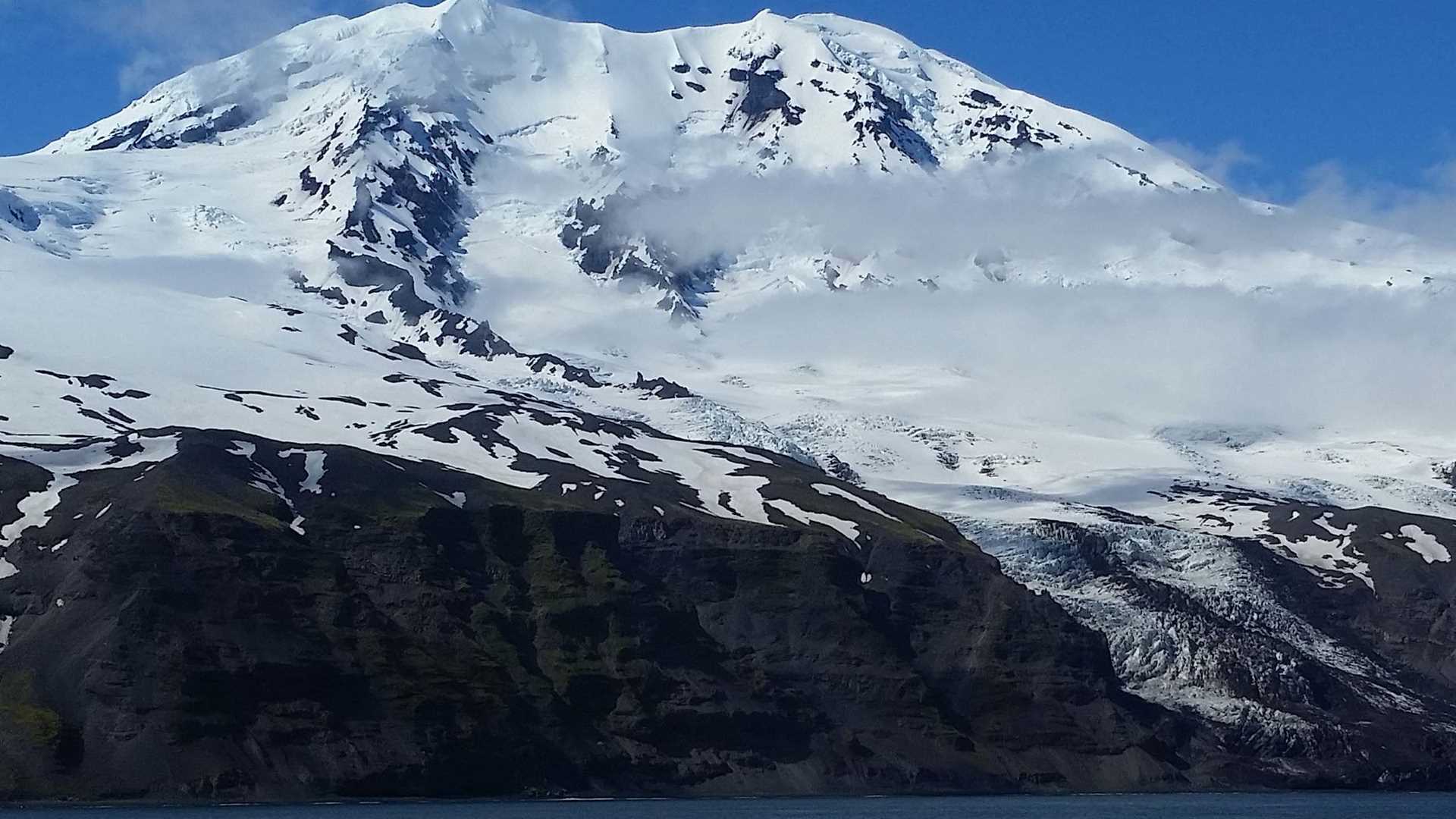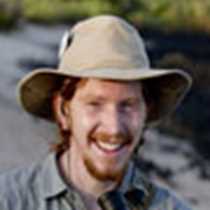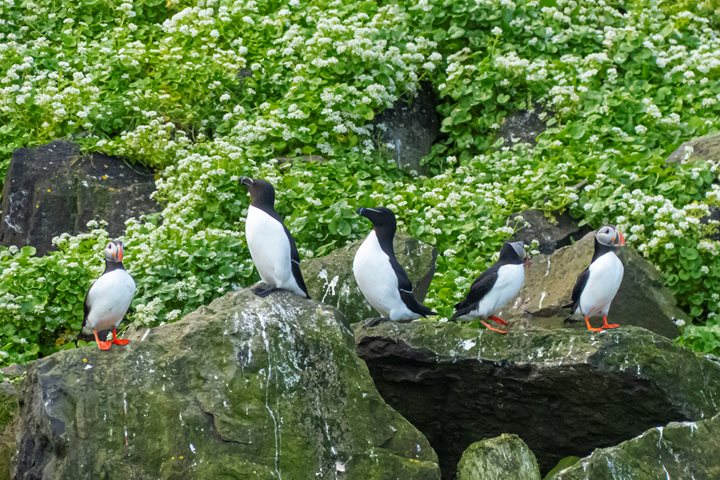We had an amazing travel day today, with outstanding experiences in scenery, wildlife viewing, geology, and Arctic research in a beautiful place most of us have never been. We visited Jan Mayen Island in the middle of the north Atlantic, over 500 miles from the nearest place you can name. It is a strange 30-mile-long volcanic island where the mid-oceanic ridge rises out of the ocean, resulting in eroded black basalt lava and red cinder cones. We landed in our Zodiacs on a black sand beach created when basalt lava reached the sea. Then, we went on our various walks to different parts of the island. Some groups walked up a path to an eroded cinder cone resembling a ruined castle, while others walked far up to a ridge that overlooked both sides of the island. There were various wildflowers all around, including purple moss campion, blue oyster plant, and white chickweed flowers. We eventually ended up at the Olonkinbyen Norwegian scientific station, which consists of about a dozen metal buildings strapped down by cables to resist the winter winds. This station is the only settlement on the island and scientists conduct meteorological, wildlife, and geologic studies in this isolated environment. There were eruptions on the northeastern tip of the island in 1970 and 1985, so the volcanoes are monitored continuously. Also, the weather station is critical, since this is so far from any other land.
After lunch, the National Geographic Explorer cruised around the north end of the island, where we saw the magnificent 7500-foot-high Beerenberg Volcano peeking out of the clouds. There are 20 glaciers streaming down all the way to the sea, giving the volcano the look of a bowl of melting ice cream. We continued along the entire coast of the island, seeing many red cinder cones, fresh lava flows, and even steam rising from some hot springs.
During the afternoon, we saw an astounding five different species of cetaceans that have come here to feed in the rich waters surrounding Jan Mayen. First, we saw very rare northern bottle-nosed whales, a deep water, beaked whale species. Later, we found a fin whale, blue whale, and humpback whale all in the same area…a veritable whale soup! We particularly enjoyed watching the humpback rise up, blow, and dive with its fluke raising out of the water close to the ship. We also saw harbor porpoises throughout the afternoon.
After a delicious dinner, we gathered in the lounge to hear our naturalist Ian give us advice on how to make our photos better. This was a perfect end of the day, since we took some of the best photos of the trip today. What an unforgettable day of exploration!









